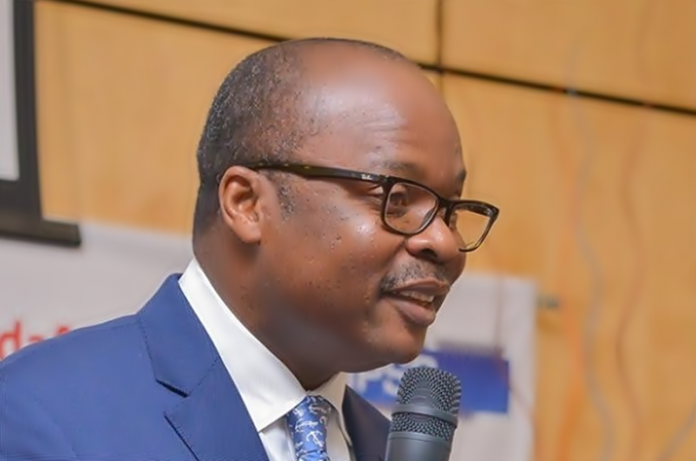
By Sheila WILLIAMS
The Governor of the Bank of Ghana (BoG), Dr. Ernest Addison revealed that Ghana’s public debt stock has risen to GHc200 billion by in May 2019,which represents 58.1% of Ghana’s GDP sustainable.
The large foreign investors component which makes the economy of Ghana very vulnerable. This has called for a shift in the conversation around the country’s debt levels from it’s stock and quantum to the composition.
Dr. Addison maintain that the amount of debt in the hands of non-resident investors showed the level of vulnerability to which the economy has been exposed.
External debt constitute 30.6% GDP
The foreign investor component of the debt constitutes 30.6% of Ghana’s Gross Domestic Production (GDP). However domestic debt amounts to $18.3 billion (GHC 94.6 billion), on the other hand, the domestic component of the debt amounted to $18.3billion (GHC 94.6 billion).
External debt is $20.5 billion (GHC 105 billion)
The summary of the latest economic data published by the Central Bank of Ghana, showed that as at May, 2019 out of the total public debt of $38.8 billion (GHC 200 billion), the external debt at $20.5 billion ( GHC 105 billion).
Domestic debt represents 27.5% of GDP
A look at the data provided by the Central Bank of Ghana, the domestic debt represents 27.5% of GDP.
Speaking at the July edition of the Monetary Policy Committee (MPC)’s, press briefing, pointed out that the banking assessment of the country’s debt situation was contingent on “very high rates of growth and on some assumptions of interest and exchange rates”.
Exchange rate movement
According Governor Addison, movement in the exchange rate have a telling effect on the debt stock, especially “the dollar value of our external debt”. The debt shot up by some GHC 2 billion between March and April 2019, was partly a reflection of exchange rate movement during that period.
Revenue mobilization challenges
Dr. Addison on this warned, of dire consequences if corrective measures were not taken to address thr risks. The pace of fiscal consolidation has slowed down, mainly reflecting gaps in revenue mobilization, whereas the pace of spending has increased.
The Governor assured the public that new measures to be announced by the Finance Minister “should help address the financial gap challenges, as well as manage the risks from the large unbudgeted energy sector – related payments that could adversely impact foreign exchange reserves and undermine the macro stability gains made so far.
Policy rate maintained at 16%
Not oblivious of the threats of fiscal underperformance to macroeconomic stability but conscious of possible inflationary effect of recent hikes in utility tariffs , among other valuable, the Bank kept the key lending rate unchanged at 16%
Banking sector has high growth prospects
From the provisional data available through the year to June 2019,showed that the banking sector was well-capitalized, solvent, liquid and profitable with improved financial solutions indicators.
“At the end of June, 2019, the bank’s total assets amounted to GHc 112.8 billion, representing an annual growth of 12.5%. The increase in total assets was funded mainly from deposits, which recorded a strong growth of 22.3% Year-on-year, “, the Central Bank stated.
Banking Capital Ratio (Car)
The Banking Industry’sCapital Adequacy Ratio (CSR), was established at 19.1%, significantly higher than the statutory minimum of 10.0%. This added that the average industry Car was 16.3%,when computed in accordance with the new Bank of Ghana Capital Requirement Directive (CRD), under the Base II/III capital framework.




























